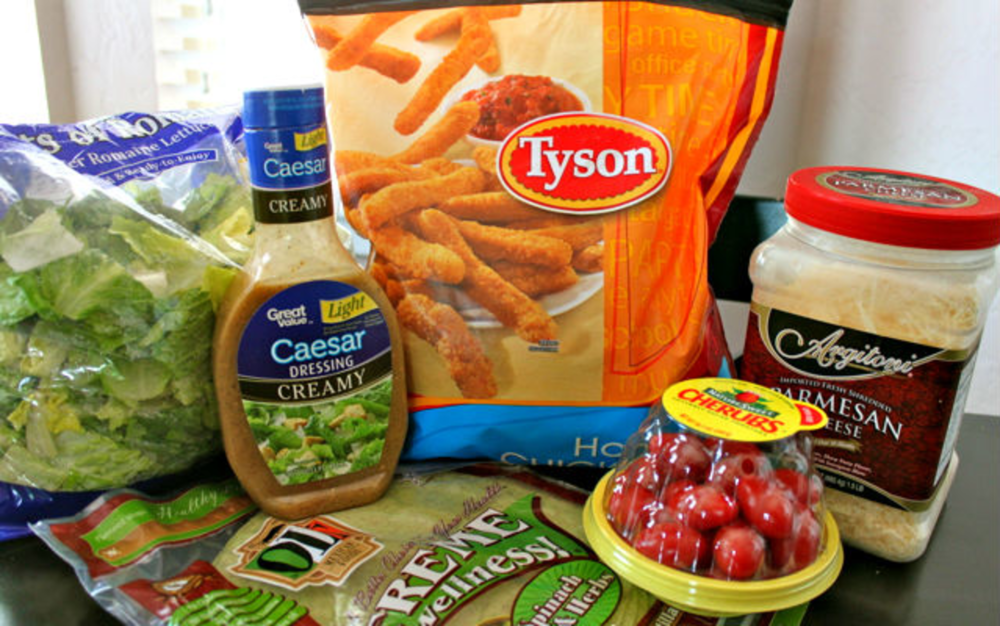Ah, the chicken nugget. Although it’s a simple breaded snack, its dinosaur or cartoon-shaped presentation leaves the impression that it’s a food reserved for those stuck at the kiddie table. But for consumers who can’t let the bite-sized bird go, there’s Tyson Food’s Home-style Chicken Fries.
Chicken Fries are a more mature version of the chicken nugget for teens and preteens who are too cool for the child-like cuisine. So when Tyson introduced the “any’tizer” to big box retailer Sam’s Club, it needed to show busy CEO moms that its Chicken Fries were a quick and convenient snack for this growing segment. As a result, Tyson launched a multichannel campaign in April 2013, in which it relied on cross-channel storytelling to drive awareness around the product’s debut.
“Our past marketing strategy was always about get[ting] as many customers as you can….Now it’s very much changed,” says Karen Doan, Tyson’s group marketing manager for alternative channels and customer marketing. “It’s about retention and loyalty; and storytelling [does] that.”
Hatching stories through social
Knowing that consumers turn to social networks for recommendations from family and friends, Tyson launched a slew of social initiatives to get customers talking about the product and engaging with the brand.
For starters, the brand engaged shopper social media company Collective Bias to leverage its blogger community to generate content, such as recipes. Bill Sussman, president and CEO of Collective Bias, says that the social media company drove traffic to these bloggers’ sites via its proprietary syndication platform and through paid media. And because each blogger within Collective Bias’ community has at least 50,000 followers, according to Sussman, the company also generated traffic organically. Furthermore, Tyson shared the content via its social channels, such as its Pinterest page.
Given that different platforms appeal to different audiences, Tyson varied its content depending on the social network. For instance, Tyson turned to Facebook to learn more about its customers’ eating habits, by including a time of consumption survey on its Club Tyson page. Customers who answered the survey were entered into a chance to win tickets to a Six Flags theme park. The brand also hosted “Twitter parties” to drive engagement.
Doan says leveraging social media helped Tyson shift its engagement mind-set from a “what’s-in-it-for-us-marketers?” mentality to a “what’s-in-it-for-our-consumer?” viewpoint.
“If we’re driving shares, then that would drive the content,” she says, “not the other way around.”
Linking online and off
In addition to reaching moms through social, Tyson relied on a mix of digital and in-store touchpoints, such as banner ads on Samsclub.com, as well as point-of-sale dipping sauce and dinner recipes. But if the poultry seller really wanted to reach moms at every touchpoint, it would have to spread its wings and connect the on- and offline experiences.
One way Tyson bridged the digital and in-store experiences was through mobile. The brand relied on geofencing and geo-targeting to reach moms who were within a five mile radius of a store. In addition, Tyson hosted in-store demos where shoppers could sample the Chicken Fries. As for shoppers who couldn’t make the demo or had never shopped at Sam’s Club, Tyson had its bloggers take pictures of their Sam’s Club shopping trips and upload them to Google+.
Roasting the competition
The campaign generated some cluckin’-good results, including a 100% increase in share of voice, more than 4,800 pieces of content created, 32.7 million impressions, and triple-digit growth in sales.
Tyson has introduced new social channels, such as Instagram. In addition, Doan says that the brand has increased its focus on reengaging consumers, including following up with customers who retweet one of the brand’s posts.
“It’s great that everybody is all excited and [that] you’re getting a lot of tweets,” she says, “but did we listen and did we take action from that listening?”
A few bad eggs
Still, a few challenges remain. For instance, although Tyson has a dashboard, Doan says keeping track of all of the brand’s incoming data remains an issue. She also says connecting the data from customers’ on- and offline experiences is an area in which Tyson needs to improve.
However, if Tyson continues to focus on the customer, odds are its competitions’ goose–or chicken, rather–will be cooked.
“Make sure that you’re thinking of what the customer wants and everything will come from there,” Doan says. “When you think about customers and what they want, then you’re authentic, you’ll have loyalty, and you’ll have retention.”








